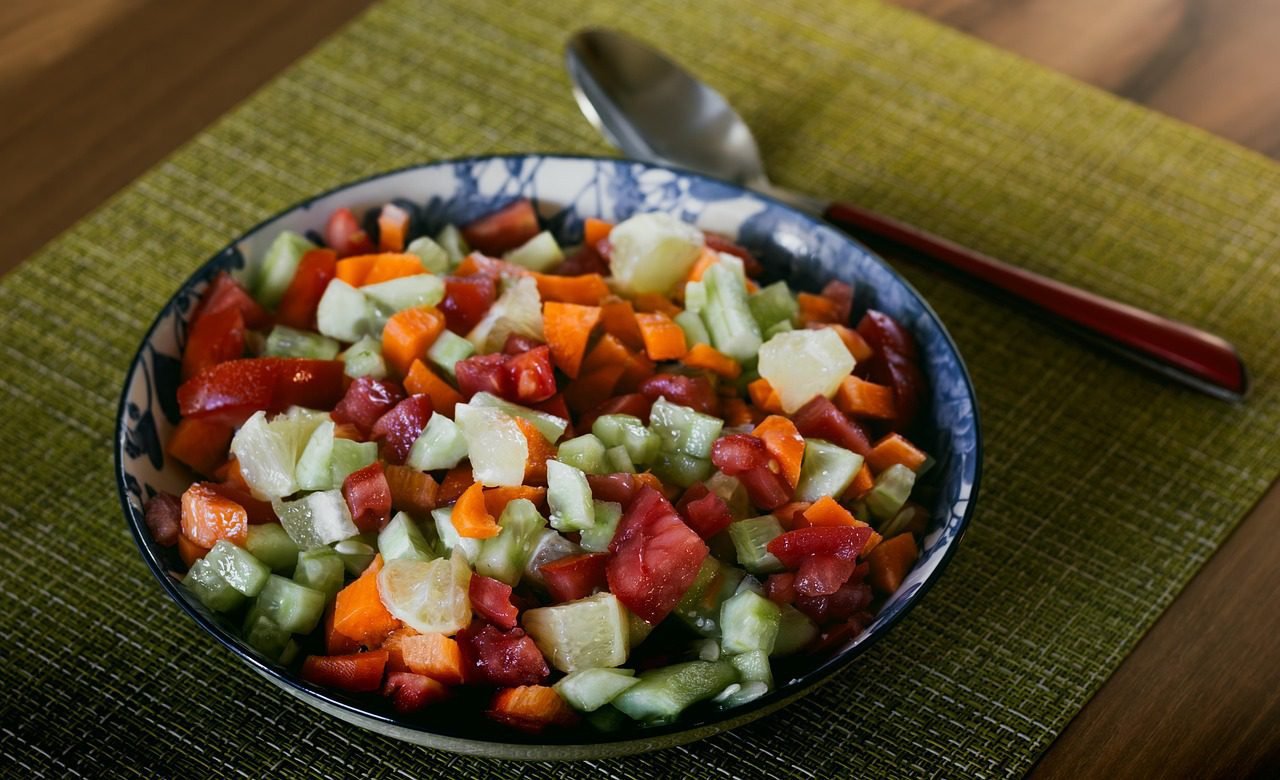The Best Food Tours in the World 2025: Culinary Adventures Guide

In the bustling markets of Bangkok, a local guide hands you a steaming bowl of boat noodles, explaining how the recipe has been passed down through generations.
In Barcelona, you sip vermouth in a century-old bodega while learning about Catalan culinary traditions.
On the streets of Mexico City, you watch in awe as a taquero expertly slices spit-roasted al pastor meat directly onto a warm tortilla.
These moments—authentic, sensory, and deeply connected to place—represent the essence of culinary tourism, an increasingly popular way to experience destinations through their most universal language: food.
In this comprehensive guide, we’ll take you on a journey through Best Food Tours in the World, from street food adventures in vibrant Asian markets to sophisticated wine and cheese experiences in European capitals.
The Emergence of Food Tours as a Tourism Model

Food tours have emerged as the fastest-growing segment in luxury tourism, with the global culinary tourism market projected to expand from USD 13.83 billion in 2024 to a staggering USD 85.04 billion by 2034, growing at a CAGR of 19.92%.
This explosive growth reflects a fundamental shift in how travelers approach destinations. According to recent studies, nearly 20% of travelers now choose their destinations based primarily on culinary offerings, and after accommodations, dining experiences have become the next highest travel budget priority in 2025.
But what exactly makes food tours so compelling? Unlike standard restaurant visits or self-guided culinary explorations, the best food tours offer something more profound: a curated journey through a destination’s cultural heritage, historical context, and contemporary identity—all through the lens of local cuisine.
They provide access to places tourists might never find independently, insights from knowledgeable guides who understand the cultural significance behind each dish, and opportunities to connect with local producers, chefs, and food artisans who are preserving culinary traditions.
So prepare your palate and pack your curiosity—we’re about to embark on a global feast of the senses that will transform how you experience destinations through their most delicious offerings.
Why Food Tours Have Become the Ultimate Travel Experience
The transformation of food tours from niche experiences to mainstream travel attractions represents one of the most significant shifts in tourism over the past decade.
This evolution reflects deeper changes in how travelers seek to connect with destinations and what they value in their journeys.
Let’s explore the factors driving the remarkable rise of culinary tourism and why food tours have become the ultimate travel experience for many.

The Rise of Culinary Tourism: By the Numbers
The statistics tell a compelling story about food tourism’s explosive growth. According to Precedence Research, the global culinary tourism market is expanding at a healthy CAGR of 19.92% and is expected to reach USD 85.04 billion by 2034.
Europe currently dominates the market with a 35% share, while Asia Pacific is projected to witness the fastest growth in the coming years.
This growth is driven by changing traveler priorities. Marriott International’s Luxe Landscapes Report found that 88% of affluent travelers ranked discovering new food or gourmet adventures as either “important” or “very important” when choosing destinations.
Similarly, 82% rated visiting new restaurants as a priority. Hilton’s 2025 travel trends report revealed that half of global travelers now book restaurant reservations before their flights, and 60% of luxury travelers prioritize staying at hotels with exceptional dining options.
The financial commitment to food experiences is equally telling. European tourists are willing to allocate approximately 25% of their overall trip budget to food and beverages—a figure that rises to 35% in expensive destinations.
This willingness to invest significantly in culinary experiences underscores how central food has become to the travel experience.
Beyond Restaurant Visits: What Makes Food Tours Different
Food tours differ fundamentally from standard restaurant visits in several important ways.
While dining at restaurants offers a glimpse into local cuisine, food tours provide a comprehensive, curated journey through a destination’s culinary landscape.
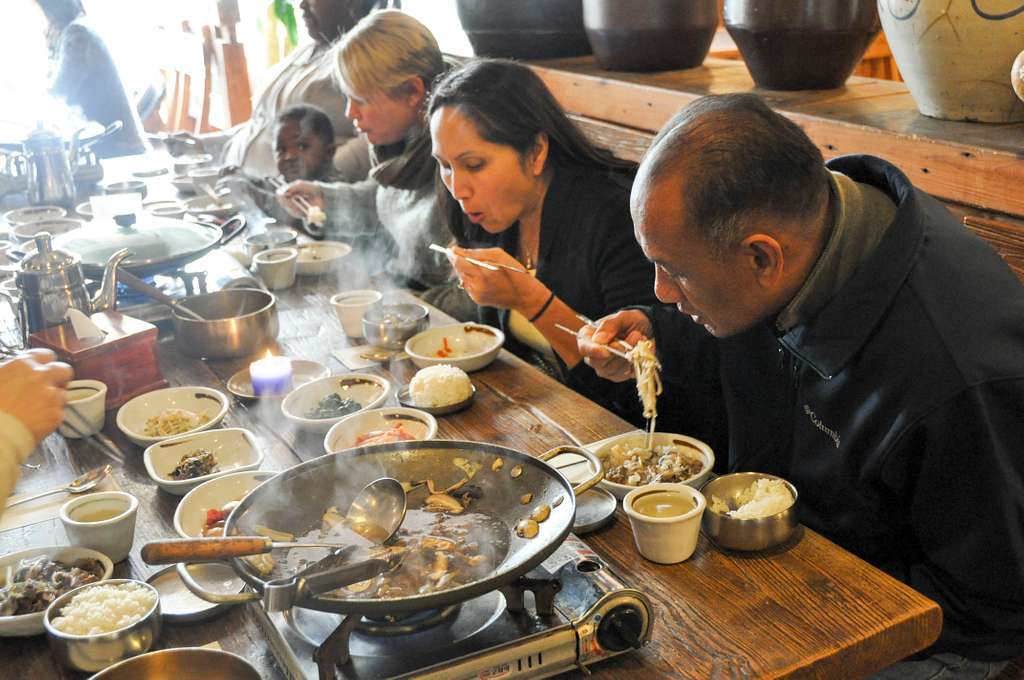
Here’s what sets them apart:
Guided Expertise:
Food tours are led by knowledgeable guides—often locals with deep connections to the food scene—who provide historical context, cultural insights, and behind-the-scenes stories that enrich the eating experience. This expertise transforms a simple meal into an educational and cultural adventure.
Curated Diversity:
Rather than experiencing a single establishment, food tours typically include multiple stops carefully selected to showcase different aspects of local cuisine. This diversity allows travelers to sample a broader range of dishes and cooking styles than would be possible through independent dining.
Access to Hidden Gems:
Many food tours include visits to establishments that tourists might never discover on their own—family-run eateries tucked away in residential neighborhoods, market stalls favored by locals, or production facilities not typically open to the public.
Social Dimension:
The group format of most food tours creates opportunities for shared experiences and connections with fellow travelers who share a passion for culinary discovery. This social element adds another layer of enjoyment to the experience.
Efficiency Factor:
For time-constrained travelers, food tours offer an efficient way to experience multiple culinary highlights in a single outing, maximizing their exposure to local food culture during a short visit.
Benefits of Guided Food Experiences
The guided nature of food tours delivers specific benefits that enhance the travel experience in meaningful ways:

Insider Access
Perhaps the most valuable aspect of guided food experiences is the access they provide to places and people that would be difficult or impossible for independent travelers to reach. This might include:
- Family kitchens where traditional recipes are prepared
- Small-scale production facilities where artisanal foods are made
- Private farms that supply local restaurants
- Invitation-only dining clubs or supper clubs
- Special tastings with renowned chefs or food producers
This insider access creates memorable, authentic experiences that go beyond what’s available to the average tourist.
For example, Culinary Backstreets’ tours in Istanbul include visits to home kitchens in residential neighborhoods where local women prepare regional specialties not found in restaurants.
Cultural Context
Food doesn’t exist in isolation—it’s deeply intertwined with history, geography, religion, and social customs. Knowledgeable guides help travelers understand these connections, transforming a simple tasting into a window into local culture.
On a food tour in Mexico City, for instance, guides might explain how pre-Hispanic ingredients like corn, beans, and chiles form the foundation of Mexican cuisine, how colonial influences introduced new elements, and how contemporary chefs are reinterpreting traditional dishes.
This cultural context adds layers of meaning to each bite and helps travelers develop a deeper appreciation for both the food and the place.
Meeting Locals
Food tours facilitate meaningful interactions with local food producers, chefs, and vendors who might otherwise have limited contact with tourists.
These encounters provide authentic cultural exchange and personal connections that many travelers find to be the most rewarding aspects of their journeys.
Whether it’s chatting with a third-generation cheese maker in France, learning cooking techniques from a home cook in Thailand, or hearing stories from a spice merchant in Morocco, these interactions create memorable human connections that transcend language barriers and cultural differences.
Types of Food Tours Available
The food tour landscape has diversified significantly, with experiences now available to suit virtually every interest, budget, and travel style. Here are some of the most popular types:

Walking Food Tours
The classic format involves exploring a neighborhood on foot, stopping at multiple establishments to sample signature dishes.
These tours typically last 3-4 hours and include 5-8 tasting locations. Walking tours are ideal for dense urban areas with diverse food scenes, such as the historic centers of European cities or the street food districts of Asian metropolises.
Example: Secret Food Tours’ Barcelona experience takes participants through the Gothic Quarter and El Born neighborhoods, sampling tapas, pintxos, Iberian ham, local cheeses, and traditional desserts while learning about Catalan culinary traditions.
Market Tours
These tours focus on exploring local food markets—often the beating heart of a city’s food culture. Guides help travelers navigate bustling marketplaces, introduce them to vendors, explain unfamiliar ingredients, and select items to taste.
Market tours provide insight into local shopping habits, seasonal produce, and the economics of local food systems.
Example: The International Kitchen’s “Flavors of Sicily” tour includes a visit to Palermo’s historic Capo Market, where participants sample street foods like panelle (chickpea fritters) and sfincione (Sicilian pizza) while learning about Sicily’s diverse culinary influences.
Cooking Classes
Combining demonstration with hands-on participation, cooking classes allow travelers to learn local techniques and recipes directly from skilled instructors.
These experiences typically include market shopping for ingredients, preparation of several dishes, and a communal meal to enjoy the results.
Cooking classes offer skills and knowledge that travelers can take home with them, extending the impact of their travel experience.
Example: In Hoi An, Vietnam, several companies offer cooking classes that begin with herb garden tours and market visits, followed by instruction in preparing Vietnamese classics like pho, banh xeo (sizzling pancakes), and fresh spring rolls.
Farm-to-Table Experiences
These immersive tours connect travelers with the agricultural origins of local cuisine.
Participants might visit farms, orchards, vineyards, or fishing operations to see how ingredients are grown, harvested, and processed before enjoying meals prepared with these ultra-fresh components.
Farm-to-table experiences highlight sustainability practices and the connection between land and plate.
Example: In New Zealand’s Hawke’s Bay region, tours combine visits to artisanal cheese producers, olive oil makers, and wineries, culminating in farm-fresh meals showcasing the region’s bounty.
Street Food Tours
Focused on informal, accessible cuisine, street food tours explore the vibrant world of roadside stands, food carts, and hawker centers.
These tours offer authentic, affordable tastes of local culinary traditions and provide insight into everyday eating habits. Street food tours are particularly popular in Asia, Latin America, and the Middle East, where street food cultures are especially rich.
Example: Bangkok Food Tours’ “Midnight Food Tour by Tuk Tuk” explores the city’s vibrant street food scene after dark, when many markets and vendors are at their busiest, offering tastes of dishes like boat noodles, mango sticky rice, and Thai-style barbecue.
Gourmet and Fine Dining Tours
At the luxury end of the spectrum, these tours focus on high-end culinary experiences, often including Michelin-starred restaurants, exclusive wine tastings, and meetings with celebrated chefs.
While more expensive than other options, these tours provide access to exceptional dining experiences and insights into cutting-edge gastronomy.
Example: Luxury tour operators like Abercrombie & Kent offer “Gourmet Japan” itineraries featuring meals at Tokyo’s finest restaurants, private cooking demonstrations with master chefs, and sake brewery visits.
Specialty and Themed Tours
Many food tours focus on specific ingredients, techniques, or culinary traditions. Popular themes include chocolate tours, coffee experiences, wine and cheese pairings, seafood specialties, and vegan or vegetarian options.
These specialized tours appeal to travelers with particular interests or dietary preferences.
Example: In Brussels, chocolate tours take participants to the city’s finest chocolatiers for tastings, demonstrations, and the opportunity to create their own confections.
The Intersection of Food and Sustainable Tourism

An increasingly important aspect of food tourism is its potential to support sustainable travel practices.
When thoughtfully designed, food tours can contribute positively to local economies, cultural preservation, and environmental sustainability.
Economic Impact
Food tours often direct tourist spending toward small, locally-owned businesses rather than international chains.
According to the World Food Travel Association, culinary tourists spend approximately 25% more on their travels than other tourists, with much of that additional spending going directly to local food producers, artisans, and restaurateurs.
Community-oriented restaurants like Parwa Community Restaurant in Peru reinvest their profits locally, meaning that every dish served contributes to community development.
Similarly, women-led culinary initiatives like AFER Women’s Association HomLunch in Morocco and Beit Khayrat Souf in Jordan provide economic opportunities for local women while offering authentic dining experiences for travelers.
Cultural Preservation
Food tours can help preserve traditional culinary practices that might otherwise be lost to globalization.
As fast-food chains and international restaurants proliferate worldwide (with over 40,000 McDonald’s and 45,000 Starbucks locations globally), local food traditions face increasing pressure.
By creating economic incentives for maintaining traditional cooking methods, growing heritage ingredients, and passing down recipes through generations, food tourism helps keep culinary traditions alive.
For example, tours that visit traditional bakers using wood-fired ovens or cheese makers using centuries-old techniques create demand for these artisanal products and support the continuation of these practices.
Environmental Considerations
The farm-to-table movement has influenced food tourism, with many tours now emphasizing locally sourced, seasonal ingredients that minimize transportation emissions and support sustainable agriculture.
Tours that highlight organic farms, regenerative agricultural practices, or traditional fishing methods help educate travelers about sustainable food systems.
Fighting back against globalized dining can support local food cultures and increase economic independence for at-risk communities.
This is crucial, as smaller farm-to-table restaurants are innately sustainable and have a dramatically lower carbon footprint than global brands.
As travelers become increasingly conscious of their environmental impact, food tours that emphasize sustainability are likely to grow in popularity.
This trend represents a positive development for both travelers seeking authentic experiences and communities working to preserve their culinary heritage while building resilient local economies.
In the next section, we’ll explore what distinguishes truly exceptional food tours from ordinary ones, providing a framework for evaluating and selecting the best culinary experiences for your travels.
What Makes a Great Food Tour? Key Elements to Look For
Not all food tours are created equal. While the global explosion in culinary tourism has led to an abundance of options in nearly every destination, the quality, authenticity, and value of these experiences vary tremendously.

Understanding what distinguishes an exceptional food tour from a mediocre one can help travelers make informed choices and ensure memorable culinary adventures. Here are the key elements that characterize truly outstanding food tours.
Expert Local Guides with Deep Knowledge
The single most important factor in a successful food tour is the guide. Great food tour guides combine several crucial qualities:
Culinary Expertise
The best guides possess comprehensive knowledge about local ingredients, traditional dishes, cooking techniques, and the evolution of regional cuisine.
They can explain how dishes are prepared, what makes them authentic, and how they fit into the broader culinary landscape. This expertise transforms simple tastings into educational experiences that deepen travelers’ appreciation for what they’re eating.
For example, guides on Context Travel’s Paris food tours are often food historians or culinary writers who can trace the development of French pastry techniques or explain the cultural significance of the baguette in French daily life.
This level of expertise provides insights that casual observation or independent dining simply cannot match.
Storytelling Ability
Beyond factual knowledge, exceptional guides are skilled storytellers who can weave compelling narratives around the food being sampled.
They share the human stories behind dishes—the family that has been making the same pasta for generations, the chef who reinvented a traditional recipe, or the historical events that shaped local eating habits.
On Culinary Backstreets’ Istanbul tours, guides might recount how the Ottoman Empire’s vast territory influenced the city’s diverse cuisine or tell the story of how a particular street vendor built their business from a single cart to a local institution.
These narratives create emotional connections to the food and place that enhance the overall experience.
Local Connections
The most valuable guides have established relationships with food vendors, restaurant owners, and producers.
These connections often translate into special treatment for tour participants—perhaps an opportunity to enter a kitchen normally closed to the public, a demonstration from a chef, or an extra tasting not available to regular customers.
Eating Europe’s Rome tours, for instance, include stops where participants are greeted by name by shop owners and treated to behind-the-counter experiences because of the company’s long-standing relationships with local businesses.
Cultural Interpretation
Food doesn’t exist in isolation—it’s deeply intertwined with history, religion, geography, and social customs. Exceptional guides help travelers understand these connections, explaining how culinary traditions reflect broader cultural patterns and values.
A guide leading a tour in Mexico might explain how corn’s central role in Mexican cuisine reflects its sacred status in pre-Hispanic cultures, or how the regional variations in mole sauce tell the story of different indigenous influences across the country.
This cultural context transforms eating from a purely sensory experience into a window into local identity and history.
Balance of Iconic Dishes and Hidden Gems
The best food tours strike a thoughtful balance between must-try classics and lesser-known local specialties:
Signature Dishes
Most travelers want to experience the iconic dishes that define a destination—paella in Valencia, pizza in Naples, pho in Hanoi. Great food tours include these classics but offer insights that elevate them beyond tourist clichés.
Guides might take participants to establishments renowned among locals (rather than those catering primarily to tourists), explain regional variations, or demonstrate how to eat these dishes as locals do.
Off-the-Beaten-Path Specialties
Equally important are the lesser-known dishes that tourists might miss without local guidance. These might include regional specialties not found in guidebooks, seasonal offerings, or humble everyday foods that locals love but visitors rarely discover.
In Bangkok, while tourists flock to pad thai stands, a knowledgeable guide might introduce tour participants to boat noodles, khao soi, or kanom krok (coconut pancakes)—dishes equally beloved by locals but often overlooked by foreign visitors.
Balancing Familiarity and Adventure
The best tours understand that most travelers want both comfort and adventure in their culinary experiences.
They might begin with more accessible dishes before gradually introducing more challenging or unusual flavors, allowing participants to expand their palates at a comfortable pace.
A tour in Seoul, for example, might start with familiar Korean barbecue before progressing to more adventurous options like live octopus or fermented skate. This thoughtful progression helps travelers build confidence in their culinary exploration.
Small Group Sizes for Personalized Experiences
Group size significantly impacts the quality of food tour experiences:

Intimate Atmosphere
Smaller groups (typically 8-12 people maximum) create opportunities for meaningful interaction with guides and fellow participants. They allow for questions, personal attention, and the flexibility to adapt to the group’s interests and pace.
Access to Smaller Venues
Many of the most authentic food establishments are small, family-run operations with limited space. Smaller tour groups can access these intimate venues without overwhelming them, allowing for more authentic experiences in places where locals actually eat.
Personalized Attention
With fewer participants, guides can tailor information to individual interests, accommodate specific questions, and ensure everyone can hear explanations and see demonstrations. This personalization enhances the educational value of the tour.
Social Dynamics
Smaller groups facilitate conversation among participants, creating opportunities to share observations, compare notes, and form connections with fellow food enthusiasts. This social dimension often becomes a valued aspect of the experience.
Companies like Devour Tours explicitly limit their group sizes to ensure these benefits, typically capping participation at 10-12 people. While smaller groups may command higher prices, the enhanced quality of experience generally justifies the premium.
Stories Behind the Food: Historical and Cultural Context
Exceptional food tours go beyond simply tasting dishes to explore the stories and contexts that make them meaningful:
Historical Narratives
Great tours place foods in their historical context, explaining how dishes evolved in response to historical events, migrations, colonization, or trade patterns.
These historical narratives help travelers understand why certain ingredients or techniques became important in local cuisine.
In New Orleans, for instance, a thoughtful food tour might explain how the city’s unique culinary heritage reflects its complex colonial history, with French, Spanish, African, Caribbean, and Italian influences all contributing to distinctive dishes like gumbo, jambalaya, and po’boys.
Cultural Significance
Food practices often reflect deeply held cultural values and social structures. The best tours explore these connections, helping travelers understand how food relates to family life, religious practices, celebrations, and everyday social interactions.
A tour in Japan might explain the cultural significance of seasonal ingredients in kaiseki cuisine, the ritual aspects of the tea ceremony, or the philosophy of balance that underlies Japanese food presentation.
Contemporary Context
Great tours also address how traditional foods are evolving in response to contemporary influences, from globalization and migration to changing lifestyles and sustainability concerns.
This contemporary context helps travelers understand food as a living, evolving aspect of culture rather than a static tradition.
In Copenhagen, for example, a tour might explore how New Nordic cuisine has reinterpreted traditional preservation techniques and foraged ingredients for modern palates, or how immigrant communities have introduced new flavors that are becoming part of the city’s culinary identity.
Variety of Establishments: From Street Food to Fine Dining
The most comprehensive food tours include a thoughtful mix of different types of eating establishments:

Diverse Venues
Great tours might include street food stalls, market vendors, casual eateries, specialty shops, and perhaps a more formal restaurant. This diversity showcases different aspects of local food culture and provides a more complete picture of how locals eat in various contexts.
Multiple Formats
Beyond restaurants and street food, exceptional tours might incorporate other food-related experiences: visits to markets where ingredients are sold, stops at production facilities to see how foods are made, or demonstrations of cooking techniques.
Authentic Local Spots
The best tours prioritize establishments that locals frequent rather than tourist-oriented venues. These might include neighborhood joints that have served the same dishes for generations, modern spots where young chefs are reinterpreting traditions, or family-run businesses preserving artisanal techniques.
Strategic Progression
Thoughtfully designed tours consider the flow of the experience, perhaps starting with lighter tastes and progressing to more substantial dishes, or organizing stops to minimize walking distances while maximizing culinary diversity.
Eating Europe’s Prague tour, for example, includes stops at a traditional Czech pub for goulash, a historic pastry shop for local sweets, a butcher shop for open-faced sandwiches, a café for coffee culture, and a restaurant for a sit-down course—providing a comprehensive overview of Czech culinary traditions in different contexts.
Opportunities for Hands-On Experiences
While tasting is central to food tours, the most memorable often incorporate interactive elements:
Participatory Demonstrations
Opportunities to try techniques—rolling pasta, folding dumplings, or preparing traditional spice mixtures—create engaging, memorable moments that deepen understanding of culinary traditions.
Market Shopping
Some tours include guided market visits where participants select ingredients that will be used in subsequent tastings or cooking demonstrations, providing insight into how locals choose and use seasonal produce.
Food Preparation
Tours that include cooking components allow travelers to learn techniques they can recreate at home, extending the impact of their travel experience beyond the trip itself.
Sensory Engagement
The best tours engage multiple senses—not just taste, but also smell (visiting spice markets or bakeries), touch (handling ingredients), sight (watching cooking demonstrations), and sound (listening to the sizzle of street food being prepared).
For example, Traveling Spoon’s experiences in Thailand often include market shopping with a local host, followed by cooking instruction in their home kitchen, creating a deeply immersive experience that goes beyond passive consumption.
Consideration for Dietary Restrictions and Preferences
Increasingly, exceptional food tours accommodate diverse dietary needs without compromising the authenticity of the experience:

Advance Communication
The best tour companies ask about dietary restrictions during the booking process and communicate clearly about which tours can accommodate specific needs.
Thoughtful Alternatives
Rather than simply omitting items for participants with restrictions, great tours provide thoughtful alternatives that maintain the cultural experience.
For instance, a tour in Spain might offer vegetarian tapas that showcase traditional techniques and flavors rather than simply skipping meat-based dishes.
Inclusive Approach
Some companies now offer specialized tours designed specifically for particular dietary preferences—vegetarian food tours of India, gluten-free pastry tours in Paris, or vegan street food experiences in Thailand.
Transparent Information
Exceptional tour providers offer detailed information about ingredients and preparation methods, allowing participants with allergies or restrictions to make informed choices about what they can safely consume.
Secret Food Tours, for example, has developed vegetarian versions of their most popular routes in cities worldwide, ensuring that non-meat-eaters can enjoy equally rich culinary experiences tailored to their preferences.
The Food Tour Evaluation Framework
To help travelers assess and compare food tour options, we’ve developed a comprehensive evaluation framework based on the elements discussed above.
This framework can be used to research tours before booking or to reflect on experiences afterward:
| Criterion | Questions to Consider | Weight |
| Guide Expertise | Does the guide have deep knowledge of local cuisine? Can they answer specific questions? Do they provide cultural and historical context? | High |
| Food Quality & Authenticity | Are the food selections representative of local cuisine? Are they from establishments locals frequent? Is there a good mix of iconic dishes and hidden gems? | High |
| Group Size | How many participants are allowed? Is the size appropriate for the venues visited? Will everyone be able to hear explanations and see demonstrations? | Medium |
| Variety of Experiences | Does the tour include different types of establishments? Is there a mix of eating, learning, and possibly hands-on activities? | Medium |
| Cultural Context | Does the tour connect food to broader cultural patterns? Are stories and historical context provided? | Medium |
| Value for Money | Considering the number and quality of tastings, the expertise provided, and the length of the tour, does it represent good value? | Medium |
| Accommodation of Dietary Needs | Can the tour accommodate common restrictions? Are alternatives thoughtfully designed? | Medium |
| Logistics & Comfort | Is the pace reasonable? Are seating opportunities provided? Is the route well-planned to minimize unnecessary walking? | Low |
| Sustainability Practices | Does the tour support local businesses? Are environmental considerations addressed? | Low |
By considering these factors when researching and selecting food tours, travelers can significantly increase their chances of finding experiences that are not just satisfying but truly exceptional—culinary adventures that will become highlights of their travels and create lasting memories.
In the next section, we’ll explore specific food tours around the world that exemplify these qualities, organized by region to help you find the perfect culinary experience for your next journey.
The Best Food Tours Around the World: Regional Highlights
Now that we understand what makes a great food tour, let’s explore some of the most exceptional culinary experiences available around the world.
This section is organized by region to help you find the perfect food tour for your next journey, whether you’re planning a dedicated culinary vacation or looking to incorporate food experiences into a broader itinerary.
Europe: Centuries of Culinary Tradition
Europe’s rich culinary heritage, regional diversity, and commitment to artisanal food production make it a premier destination for food tourism.
The continent currently dominates the global culinary tourism market with a 35% share, offering experiences that range from rustic countryside fare to sophisticated urban gastronomy.
Mediterranean Marvels
Barcelona, Spain: Tapas and Catalan Cuisine
Barcelona’s vibrant food scene combines traditional Catalan cooking with innovative modern approaches. The city’s compact layout and distinct neighborhoods make it ideal for walking food tours.
Standout Tour: Devour Tours’ “Barcelona Tapas, Taverns & History Tour”
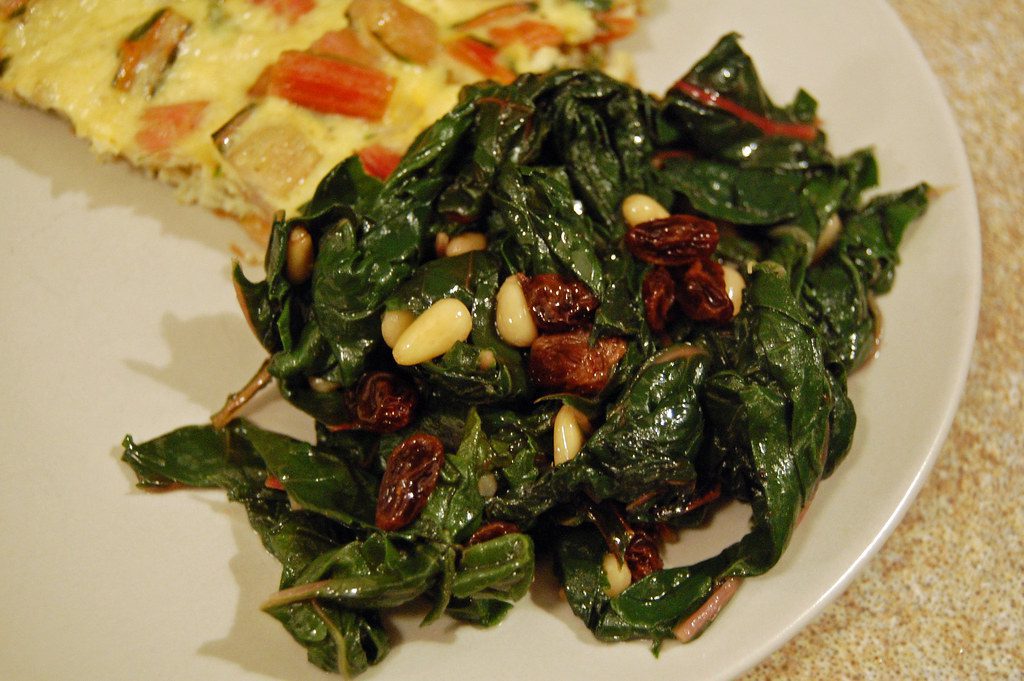
This highly-rated experience takes small groups through the Gothic Quarter and El Born neighborhoods, visiting family-run establishments that have been serving locals for generations.
What sets this tour apart is its thoughtful integration of Barcelona’s fascinating history with its culinary traditions. Participants learn how political events, from the Spanish Civil War to Catalonia’s independence movement, have influenced local food culture.
The tour includes stops at a traditional bodega for vermouth and conservas (preserved seafood), a family-run restaurant for authentic paella, and specialty shops for Iberian ham, local cheeses, and traditional pastries.
Guides explain the ritual of “pa amb tomàquet” (bread with tomato), the social importance of long, leisurely meals, and the distinction between Spanish and Catalan cuisines.
Why It’s Exceptional: Small groups (maximum 10 participants), guides with deep local knowledge, off-the-tourist-track venues, and a perfect balance of eating and cultural context.
Rome, Italy: Ancient Traditions and Modern Interpretations
Rome’s cuisine reflects its status as an ancient crossroads and imperial capital, with dishes that have evolved over millennia yet remain distinctly local.
Standout Tour: Eating Europe’s “Trastevere for Foodies”
This evening tour explores Trastevere, a charming neighborhood known for its authentic Roman cuisine and lively atmosphere.
What distinguishes this experience is its focus on how Romans actually eat today—the daily rituals, seasonal specialties, and social customs that define the city’s food culture.
Participants sample suppli (fried rice balls), Roman-style pizza, pasta dishes like cacio e pepe and carbonara, and gelato from artisanal producers.
The tour includes stops at a family-run trattoria, a historic bakery, and a traditional wine cellar, with plenty of local wine to accompany the tastings.
Why It’s Exceptional: Evening timing captures Rome’s vibrant dinner culture, multi-generational family businesses provide authentic experiences, and guides offer insights into how Romans maintain culinary traditions in a changing world.
Athens, Greece: From Ancient Markets to Modern Mezze
Athens offers a compelling mix of traditional Greek cuisine and contemporary interpretations, with food markets that have operated continuously for centuries.
Standout Tour: Culinary Backstreets’ “Moveable Sunday Feast”
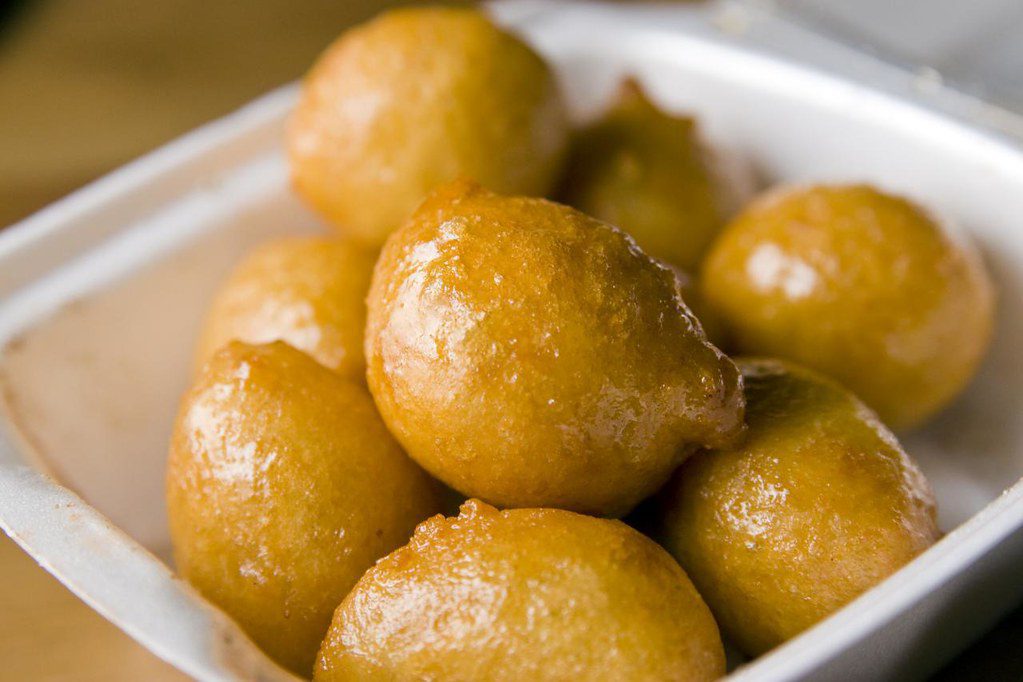
This unique tour takes advantage of special Sunday traditions in Athens, when many families gather for extended meals and certain markets operate only on this day.
The experience begins at a traditional dairy bar for yogurt with honey, continues to a bakery for koulouri (sesame bread rings), and progresses through various neighborhoods for specialties like loukoumades (honey doughnuts) and souvlaki.
What makes this tour special is its exploration of how Sunday food rituals bring Athenian families together and how these traditions have persisted through economic challenges and social changes.
The tour includes visits to specialty shops that have been in the same family for generations, as well as newer establishments where young chefs are reinterpreting Greek classics.
Why It’s Exceptional: Unique Sunday focus provides insights into Greek family life, excellent variety of sweet and savory tastes, and thoughtful progression from morning pastries to substantial lunch dishes.
Northern European Delights
Copenhagen, Denmark: New Nordic Cuisine and Traditional Favorites
Copenhagen has emerged as one of Europe’s most exciting food destinations, combining traditional Danish comfort food with the innovative New Nordic cuisine that has revolutionized fine dining globally.
Standout Tour: Copenhagen Food Tours’ “Culinary Experience Tour”

This comprehensive tour explores both traditional Danish specialties and the principles of New Nordic cuisine that have put Copenhagen on the global culinary map.
Participants visit Torvehallerne food market for open-faced smørrebrød sandwiches, sample Danish cheeses and charcuterie, taste craft beers from microbreweries, and try modern interpretations of classic dishes.
What distinguishes this tour is its exploration of how Danish food culture has evolved—from traditional preservation techniques developed for harsh winters to the modern emphasis on local, seasonal, and sustainable ingredients championed by restaurants like Noma.
Guides explain how foraging, fermentation, and minimizing food waste have become central to contemporary Danish cooking while remaining rooted in historical practices.
Why It’s Exceptional: Excellent balance of traditional and modern Danish cuisine, strong focus on sustainability practices, and thoughtful explanation of the New Nordic food philosophy.
Paris, France: From Patisseries to Bistros
Paris remains the quintessential destination for food lovers, with its unparalleled concentration of bakeries, cheese shops, chocolate makers, wine bars, and restaurants ranging from humble bistros to Michelin-starred establishments.
Standout Tour: Context Travel’s “Paris Market Tour with a Chef”
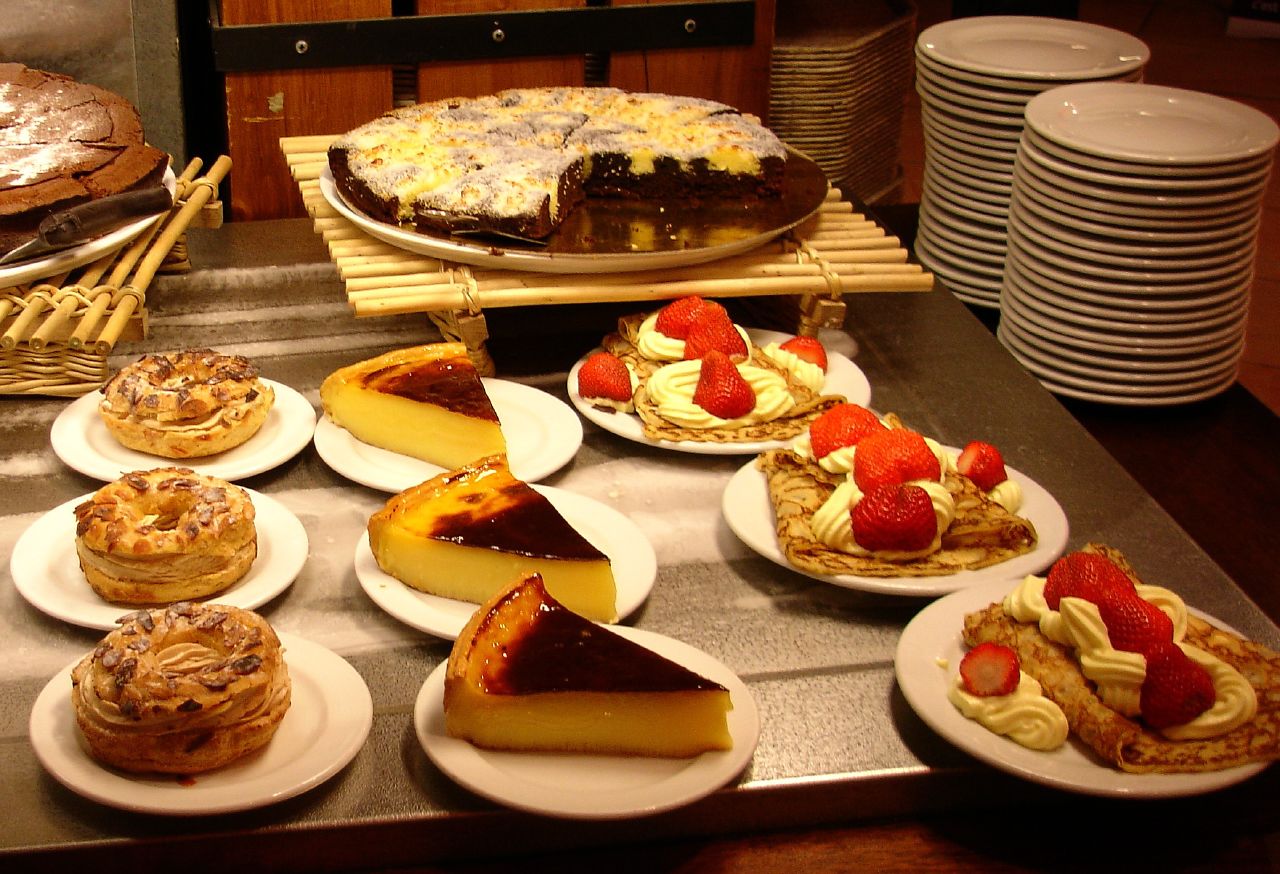
Led by professional chefs or food writers, this small-group experience focuses on understanding French ingredients and how they’re used in classic cuisine.
The tour explores a traditional Parisian market, where guides explain how to select the perfect cheese, identify the freshest fish, and choose seasonal produce.
What sets this tour apart is its educational approach—participants learn about France’s strict food quality designations (AOC/AOP), the training system for artisanal food producers, and the cultural importance of shopping daily for fresh ingredients.
The experience includes tastings of cheeses, charcuterie, bread, pastries, and wine, with guides explaining how these elements come together in French cooking.
Why It’s Exceptional: Expert-led by culinary professionals, strong educational component, and focus on ingredients rather than just finished dishes.
Asia: Street Food Paradise and Ancient Culinary Traditions
Asia offers some of the world’s most vibrant street food scenes, complex flavor profiles, and ancient culinary traditions. The continent is experiencing the fastest growth in food tourism, with travelers increasingly drawn to its diverse and often affordable culinary experiences.
Southeast Asian Flavors
Bangkok, Thailand: Street Food Capital of the World
Bangkok’s street food scene is legendary, with thousands of vendors serving everything from simple noodle dishes to complex curries at affordable prices throughout the day and night.
Standout Tour: Bangkok Food Tours’ “Midnight Food Tour by Tuk Tuk“
This evening adventure combines culinary exploration with Bangkok’s vibrant nightlife, transporting participants between locations in Thailand‘s iconic three-wheeled tuk-tuks.
The tour includes stops at Michelin-listed street food stalls, a historic restaurant serving royal Thai cuisine, flower markets that come alive at night, and rooftop bars with panoramic city views.
What makes this tour exceptional is its timing—many of Bangkok’s best food vendors only operate in the evening, and markets take on a different character after dark. Guides explain the regional origins of various Thai dishes, the balance of sweet, sour, salty, and spicy flavors that characterizes Thai cuisine, and how to eat like a local in various settings.
Why It’s Exceptional: Unique evening perspective on Bangkok’s food scene, exciting transportation method, and excellent variety of establishments from humble street stalls to historic restaurants.
Hoi An, Vietnam: Culinary Melting Pot
This UNESCO-listed ancient trading port reflects centuries of cultural exchange in its distinctive cuisine, which combines Vietnamese techniques with influences from China, Japan, and Europe.
Standout Tour: Hoi An Food Tour’s “Street Food Walking Tour”
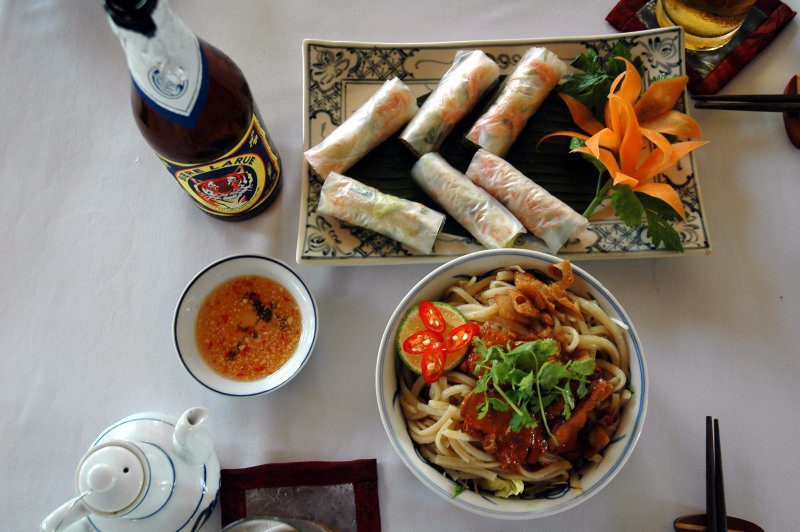
This morning tour explores Hoi An’s atmospheric Old Town and bustling central market, focusing on dishes unique to the central Vietnam region.
Participants sample cao lau (noodles made with water from ancient Cham wells), white rose dumplings, banh mi sandwiches from the stall made famous by Anthony Bourdain, and Vietnamese coffee prepared in various styles.
What distinguishes this tour is its exploration of Hoi An’s unique culinary heritage as a trading port where Vietnamese cooking absorbed influences from Chinese, Japanese, and European merchants.
Guides explain how certain dishes evolved through this cultural exchange and why some specialties can only be found in Hoi An.
Why It’s Exceptional: Focus on Hoi An-specific dishes not found elsewhere in Vietnam, excellent historical context about the ancient trading port, and opportunities to interact with local vendors.
East Asian Experiences
Tokyo, Japan: From Street Food to Michelin Stars
Tokyo holds more Michelin stars than any city in the world, but its food culture is equally impressive at the casual end of the spectrum, from izakaya pubs to ramen shops and street food stalls.
Standout Tour: Arigato Japan’s “Tokyo After 5” Evening Food Tour
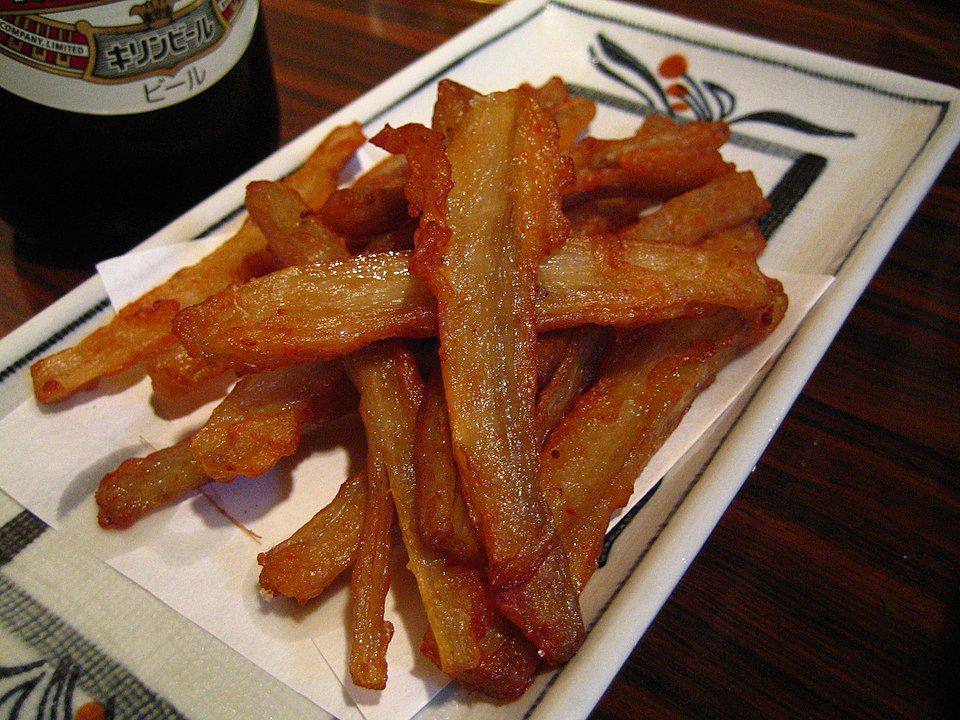
This evening tour explores Tokyo’s izakaya culture—the Japanese tradition of casual dining and drinking that’s central to social and business life.
Participants visit several izakaya in the atmospheric Yurakucho and Shimbashi neighborhoods, sampling small plates like yakitori (grilled skewers), karaage (fried chicken), and various seafood dishes, accompanied by sake, beer, and shochu.
What makes this tour special is its insight into Japanese drinking and dining etiquette, office culture, and social customs.
Guides explain traditions like “nomihodai” (all-you-can-drink specials), the proper way to pour drinks for others, and the importance of after-work socializing in Japanese business culture.
Why It’s Exceptional: Authentic local experience rarely accessible to foreign visitors, excellent cultural insights beyond just food, and atmospheric locations under the train tracks where many of Tokyo’s most authentic izakaya are located.
Hong Kong: Where East Meets West
Hong Kong’s unique history as a British colony and international trading hub has created a distinctive food culture that blends Cantonese traditions with Western influences and global innovations.
Standout Tour: Hong Kong Foodie’s “Sham Shui Po Foodie Tour”
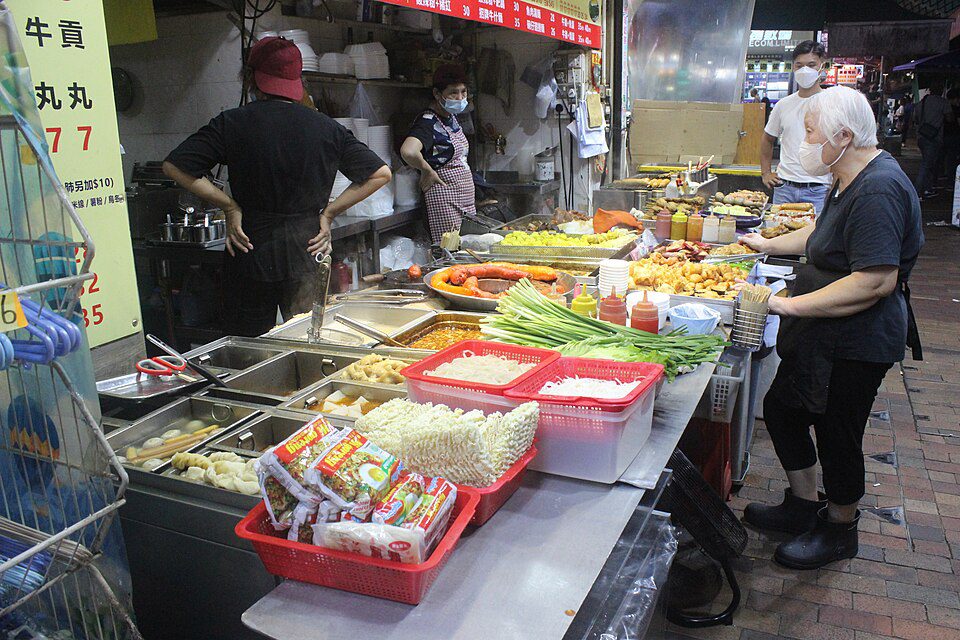
This daytime tour explores Sham Shui Po, one of Hong Kong’s most traditional working-class neighborhoods and a paradise for food lovers.
Participants sample pineapple buns from a decades-old bakery, hand-pulled noodles, rice rolls, tofu pudding, and Hong Kong-style milk tea, visiting establishments that have been serving local residents for generations.
What distinguishes this tour is its exploration of a neighborhood rarely visited by tourists despite its rich culinary heritage.
Guides explain how certain dishes reflect Hong Kong’s unique position between East and West, the importance of texture in Cantonese cuisine, and how residents of this dense urban area have maintained food traditions despite rapid development and change.
Why It’s Exceptional: Off-the-tourist-track neighborhood, multi-generational family businesses, and excellent value with substantial tastings at very reasonable prices.
North America: Melting Pot of Global Influences
North America’s food scene reflects its immigrant history, with traditional cuisines from around the world adapting to local ingredients and tastes while maintaining their distinctive character.
The continent offers some of the world’s most diverse urban food experiences alongside regional specialties with deep historical roots.
United States: Regional Cuisines and Immigrant Influences
New Orleans, Louisiana: America’s Most Distinctive Food City
New Orleans’ unique culinary heritage reflects its complex colonial history, with French, Spanish, African, Caribbean, and Italian influences creating distinctive dishes found nowhere else in America.
Standout Tour: Doctor Gumbo Tours’ “Cocktails and Cuisine Tour”
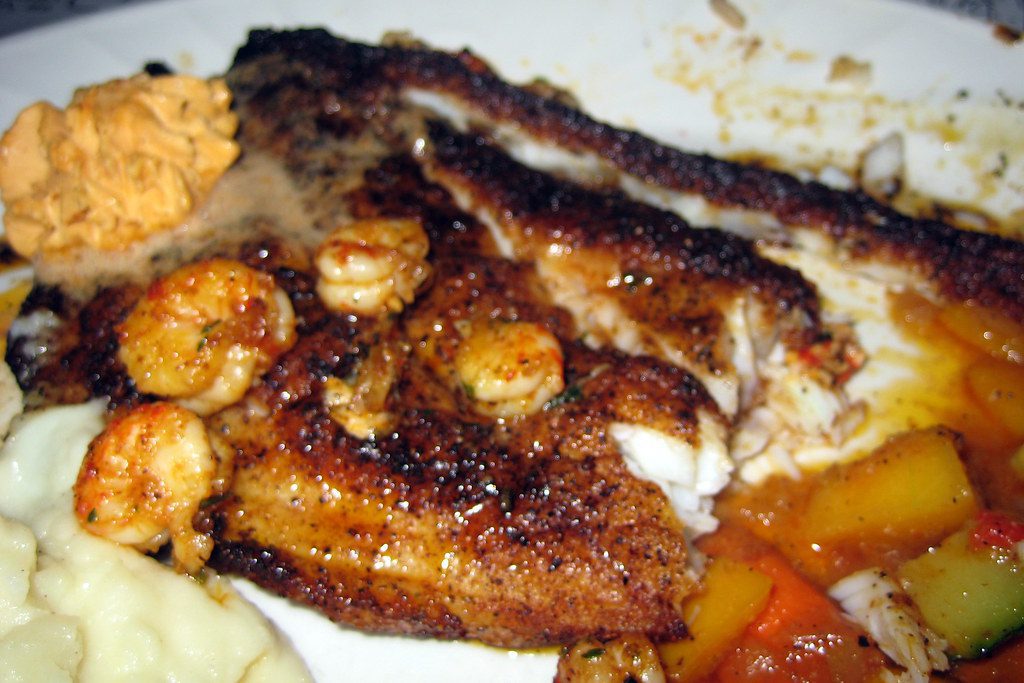
This evening tour explores the French Quarter’s food and drink culture, combining substantial food tastings with classic New Orleans cocktails.
Participants sample iconic dishes like gumbo, jambalaya, po’boys, and beignets while enjoying Sazeracs, Hurricanes, and other cocktails that originated in the city.
What makes this tour exceptional is its exploration of how New Orleans’ food and drink cultures evolved together and how specific historical events—from French and Spanish colonial rule to Prohibition—shaped what and how locals eat and drink today.
Guides explain the African influences on Creole cuisine, the distinction between Creole and Cajun cooking, and how specific ingredients like filé powder and holy trinity (bell pepper, onion, and celery) define local flavors.
Why It’s Exceptional: Perfect balance of food and cocktail history, excellent historical context about New Orleans’ unique cultural development, and substantial tastings that constitute a full meal.
New York City: Global Cuisine in One City
New York offers perhaps the world’s most diverse food scene, with authentic representations of virtually every global cuisine alongside distinctively local specialties.
Standout Tour: Foods of NY Tours’ “Heart & Soul of Greenwich Village”
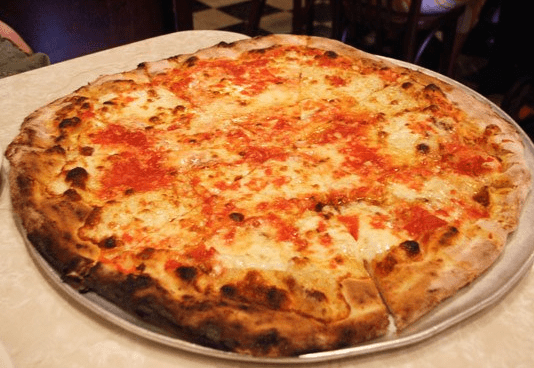
This daytime tour explores one of New York’s most historic and charming neighborhoods, focusing on family-run establishments that have survived despite rapid gentrification.
Participants sample New York-style pizza, arancini (rice balls) from a century-old Italian shop, artisanal cheese, falafel from a family-run Middle Eastern restaurant, and cookies from a classic Italian-American bakery.
What distinguishes this tour is its exploration of how waves of immigration shaped Greenwich Village and New York’s broader food culture.
Guides explain how Italian immigrants adapted their cuisine to American ingredients, how Jewish culinary traditions influenced New York’s food landscape, and how more recent immigrants continue to enrich the city’s dining scene.
Why It’s Exceptional: Perfect balance of neighborhood history and food tasting, excellent variety of establishments from street food to sit-down restaurants, and strong focus on family-run businesses with compelling stories.
Mexico: Ancient Traditions and Regional Diversity
Mexico City: From Street Tacos to High Cuisine
Mexico’s capital offers one of the world’s most exciting food scenes, from humble street stalls serving perfect tacos to high-end restaurants reinterpreting pre-Hispanic ingredients and techniques.
Standout Tour: Eat Mexico’s “Mexico City Street Food Tour: Historic Center”

This daytime tour explores the historic center’s vibrant street food scene, where vendors have been feeding locals for generations.
Participants sample tacos al pastor (spit-roasted pork with pineapple), tlacoyos (oval-shaped blue corn patties topped with beans and cheese), tamales, quesadillas with huitlacoche (corn fungus), and aguas frescas (fruit drinks).
What makes this tour special is its deep dive into the techniques, ingredients, and traditions behind Mexico’s street food culture.
Guides explain the pre-Hispanic origins of many ingredients, the influence of Spanish colonization on Mexican cuisine, and how contemporary street food vendors maintain traditions while adapting to modern urban life.
Why It’s Exceptional: Expert guides who are also cookbook authors or food journalists, excellent variety of street food styles, and strong educational components about ingredients and techniques.
South America: Bold Flavors and Cultural Fusion
South America’s diverse culinary landscape reflects its indigenous heritage, colonial influences, and waves of immigration from Europe, Asia, and Africa.
The continent offers unique ingredients, distinctive cooking techniques, and vibrant food cultures that are increasingly drawing international attention.
Peru: The Gastronomic Capital of South America
Lima, Peru: Where Ancient Meets Contemporary
Lima has emerged as South America’s culinary capital, with a food scene that ranges from traditional cevicherías to world-renowned restaurants exploring Peru’s biodiversity and cultural fusion.
Standout Tour: Lima Gourmet Company’s “The Lima Gourmet Evening Tour”
This evening experience explores Lima’s sophisticated contemporary food scene, which has earned the city international recognition as a culinary destination.

Participants visit an award-winning cevichería to learn about Peru’s national dish, stop at a traditional tavern to prepare their own pisco sours (Peru’s national cocktail), and enjoy dinner at a restaurant specializing in modern interpretations of Peruvian classics.
What distinguishes this tour is its exploration of how Peru’s ancient ingredients and diverse cultural influences have been reimagined by contemporary chefs.
Guides explain concepts like Nikkei cuisine (the fusion of Peruvian and Japanese techniques), the importance of Peru’s microclimates in creating diverse regional cuisines, and how the country’s gastronomic renaissance has become a source of national pride.
Why It’s Exceptional: Excellent balance of traditional and contemporary Peruvian cuisine, hands-on cocktail preparation, and thoughtful explanation of Peru’s gastronomic renaissance.
Cusco and Sacred Valley: Andean Cuisine and Ancient Techniques
The former capital of the Inca Empire offers unique insights into indigenous Andean ingredients and cooking methods that have been preserved for centuries.
Standout Tour: Cusco Culinary’s “Farm to Table Sacred Valley Tour”
This full-day experience takes participants from Cusco to the Sacred Valley, where they visit local markets, participate in a Pachamanca ceremony (traditional earth oven cooking), and learn about ancient Andean ingredients like quinoa, kiwicha, and hundreds of varieties of potatoes native to the region.
What makes this tour exceptional is its focus on sustainable agriculture and the preservation of indigenous food traditions.
Participants visit a local farm to learn about traditional cultivation methods, meet with communities maintaining ancient agricultural practices, and understand how these traditions are being preserved despite economic pressures and climate change.
Why It’s Exceptional: Immersive experience in rural communities rarely visited by tourists, hands-on participation in traditional cooking methods, and strong focus on agricultural sustainability and food sovereignty.
Middle East and North Africa: Ancient Spice Routes and Timeless Techniques
The Middle East and North Africa offer some of the world’s oldest continuously practiced culinary traditions, with complex spice blends, sophisticated preservation techniques, and communal dining customs that have influenced food cultures worldwide.
Morocco: Spice Markets and Tagine Traditions
Marrakech, Morocco: Where Berber, Arab, and French Influences Converge
Marrakech’s labyrinthine medina houses one of the world’s most atmospheric food scenes, with souks (markets) selling everything from exotic spices to traditional sweets, and restaurants serving dishes that reflect centuries of cultural exchange.

Standout Tour: Marrakech Food Tours’ “Evening Street Food Tour”
This evening experience explores the food stalls and small restaurants that come alive in Marrakech’s Jemaa el-Fna square and surrounding alleyways after dark.
Participants sample mechoui (slow-roasted lamb), tangia (meat slow-cooked in clay pots), various tagines, couscous, and sweet pastries like chebakia and briouat.
What distinguishes this tour is its exploration of how Moroccan cuisine reflects the country’s position at the crossroads of Berber, Arab, and European influences.
Guides explain the significance of communal dining traditions, the symbolic importance of certain dishes in Moroccan celebrations, and how specific spice blends define regional variations in Moroccan cooking.
Why It’s Exceptional: Atmospheric evening timing when Jemaa el-Fna is most vibrant, excellent variety of regional Moroccan specialties, and strong cultural context about Moroccan hospitality traditions.
Turkey: Where East Meets West
Istanbul, Turkey: Crossroads of Civilizations
Istanbul’s strategic position spanning Europe and Asia has created one of the world’s most diverse and sophisticated culinary traditions, with influences from the Mediterranean, Middle East, Central Asia, and the Balkans.
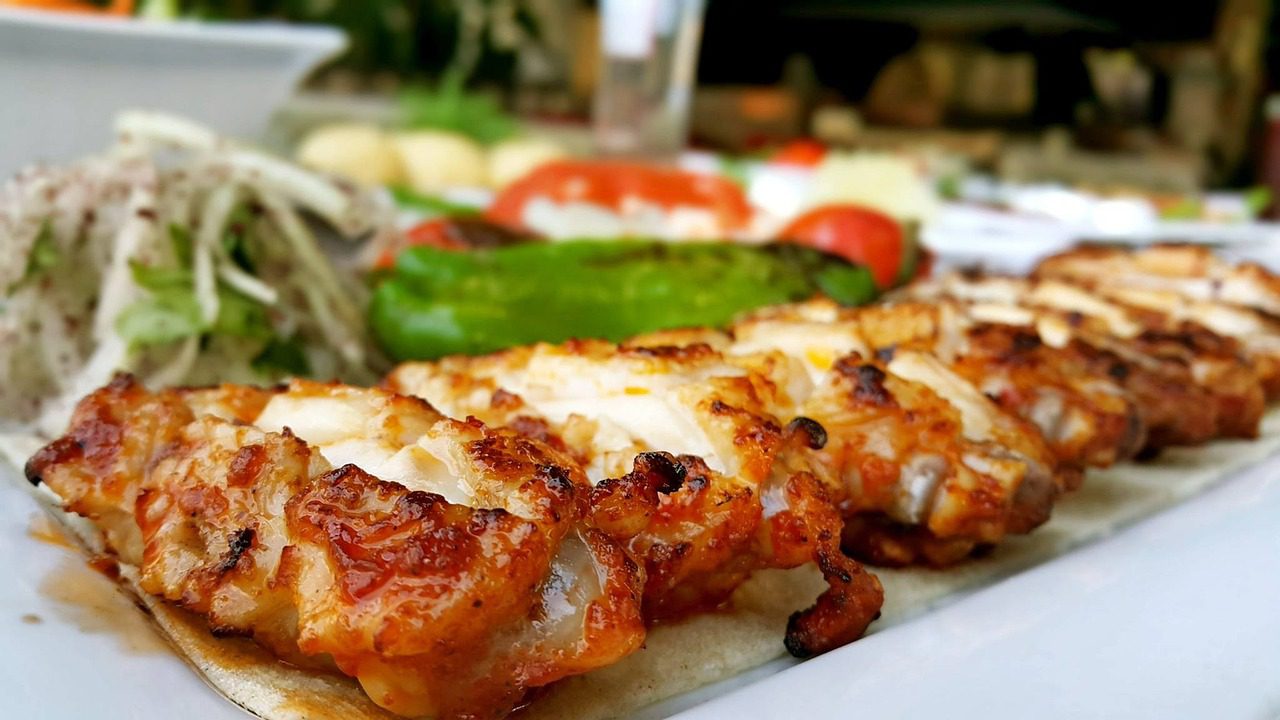
Standout Tour: Culinary Backstreets’ “Two Markets, Two Continents”
This full-day experience crosses the Bosphorus to explore food markets and neighborhoods on both the European and Asian sides of Istanbul.
Participants sample Turkish breakfast spreads, various kebabs, mezes (small plates), pide (Turkish flatbread), baklava, Turkish coffee, and tea, visiting establishments that range from street food stalls to traditional restaurants.
What makes this tour exceptional is its exploration of how Istanbul’s position between continents has created a uniquely diverse food culture.
Guides explain the Ottoman culinary heritage that once incorporated dishes from across a vast empire, the regional variations in Turkish cuisine, and how contemporary Istanbul balances tradition and innovation in its food scene.
Why It’s Exceptional: Comprehensive exploration of both European and Asian sides of the city, excellent variety of establishments from street food to sit-down meals, and strong historical context about Ottoman culinary traditions.
Oceania: Pacific Rim Fusion and Indigenous Ingredients
Australia and New Zealand offer exciting food scenes that combine indigenous ingredients, Asian influences, and European techniques, creating distinctive Pacific Rim cuisines that are increasingly gaining international recognition.
Australia: Native Ingredients and Multicultural Influences
Melbourne, Australia: Coffee Culture and Culinary Innovation
Melbourne’s diverse food scene reflects waves of immigration from Europe, Asia, and the Middle East, combined with growing interest in native Australian ingredients and sustainable practices.
Standout Tour: Melbourne Food Experiences’ “Queen Victoria Market Tour”

This morning tour explores Australia’s largest open-air market, where participants sample artisanal cheeses, charcuterie, Australian bush foods, fresh seafood, and Melbourne’s famous coffee.
The experience includes meeting with vendors who have been market fixtures for generations and learning about the sustainable practices of local producers.
What distinguishes this tour is its exploration of how Melbourne’s waves of immigration—particularly from Italy, Greece, Vietnam, and Lebanon—have shaped the city’s food culture.
Guides explain how coffee became central to Melbourne’s identity, how indigenous ingredients are being rediscovered by contemporary chefs, and how the city’s food scene reflects broader Australian conversations about sustainability and ethical consumption.
Why It’s Exceptional: Strong focus on producer stories and sustainable practices, excellent introduction to native Australian ingredients, and thoughtful exploration of Melbourne’s multicultural food identity.
New Zealand: Farm-to-Table Pioneer
Auckland, New Zealand: Pacific Rim Cuisine and Maori Influences
Auckland’s food scene reflects New Zealand’s position as a Pacific nation with strong connections to both Asia and Europe, as well as growing recognition of Maori culinary traditions.
Standout Tour: The Big Foody’s “Coast to Coast Tour”

This full-day experience explores Auckland’s diverse food landscape, from the city’s vibrant markets to the vineyards and orchards of the surrounding countryside.
Participants sample New Zealand cheeses, honey, chocolate, wine, and seafood, with a focus on producers practicing sustainable methods.
What makes this tour special is its exploration of New Zealand’s farm-to-table ethos and how the country’s geographical isolation has influenced its approach to food production and sustainability.
Guides explain the growing interest in Maori food traditions, the influence of Pacific Island cuisines on contemporary New Zealand cooking, and how local chefs are defining a distinctive New Zealand culinary identity.
Why It’s Exceptional: Comprehensive exploration of both urban and rural food producers, strong focus on sustainability practices, and thoughtful inclusion of Maori culinary traditions.
Emerging Food Tourism Destinations
While certain cities and regions have long been recognized as culinary destinations, several emerging locations are gaining attention for their distinctive food cultures and innovative approaches to culinary tourism.
Georgia: The Caucasus Culinary Treasure
Georgia’s ancient wine-making traditions (dating back 8,000 years) and distinctive cuisine—influenced by its position between Europe, Asia, and the Middle East—are drawing increasing numbers of food tourists.
Standout Tour: Culinary Backstreets’ “Tbilisi Culinary Backstreets Walk”

This full-day experience explores Georgia’s capital city through its markets, bakeries, wine cellars, and family-run restaurants.
Participants sample khachapuri (cheese-filled bread), khinkali (dumplings), various walnut-based sauces, churchkhela (nuts dipped in grape juice), and wines made using traditional qvevri (clay vessels buried underground).
What distinguishes this tour is its exploration of how Georgia’s tumultuous history—including periods of Russian, Persian, and Ottoman influence—has shaped its resilient food culture.
Guides explain the significance of the supra (Georgian feast), the ancient traditions of natural wine-making that predate similar movements in Western Europe by millennia, and how Georgian cuisine is maintaining its identity while gaining international recognition.
Why It’s Exceptional: Focus on a cuisine still unfamiliar to many Western travelers, excellent historical context about Georgia’s complex cultural position, and opportunities to meet with families preserving traditional recipes and techniques.
Vietnam’s Central Highlands: Coffee Country
Vietnam’s Central Highlands region, centered around the city of Dalat, is emerging as a destination for coffee tourism, showcasing the country’s position as the world’s second-largest coffee producer and its distinctive coffee culture.
Standout Tour: OneTrip’s “Dalat Coffee Tour”

This full-day experience explores Vietnam’s coffee industry from farm to cup. Participants visit coffee plantations to learn about cultivation methods, processing facilities to understand how beans are prepared, and cafés serving various Vietnamese coffee styles, from traditional cà phê sữa đá (iced coffee with condensed milk) to experimental methods developed by young Vietnamese baristas.
What makes this tour special is its exploration of how coffee became central to Vietnamese culture despite being introduced by French colonizers, and how the industry is evolving to address sustainability challenges and changing consumer preferences.
Guides explain the distinction between robusta and arabica production, the economic importance of coffee to the region, and how specialty coffee is creating new opportunities for Vietnamese farmers.
Why It’s Exceptional: Comprehensive exploration of the entire coffee production process, strong educational component about sustainable cultivation practices, and excellent tastings of both traditional and contemporary Vietnamese coffee styles.
Slovenia: Europe’s Hidden Culinary Gem
Slovenia’s diverse landscapes—from Alpine peaks to Mediterranean coastline—have created a distinctive cuisine that draws from Italian, Austrian, Hungarian, and Balkan traditions while maintaining its own character.
Standout Tour: Ljubljananjam’s “Taste Ljubljana Food Tour”
This walking tour explores Slovenia’s capital city through its markets, street food, traditional restaurants, and contemporary establishments.

Participants sample traditional dishes like štruklji (rolled dumplings), potica (rolled pastry), various sausages, and local wines and spirits, while learning about Slovenia’s approach to sustainable gastronomy.
What distinguishes this tour is its exploration of how Slovenia—despite its small size—maintains distinct regional cuisines influenced by its neighbors while developing a contemporary food identity focused on sustainability and local sourcing.
Guides explain the country’s “zero kilometer” food philosophy, the influence of chef Ana Roš in bringing international attention to Slovenian cuisine, and how traditional preservation techniques are being revitalized by a new generation of producers.
Why It’s Exceptional: Introduction to a lesser-known European cuisine, strong focus on sustainability practices, and excellent balance of traditional and contemporary Slovenian food culture.
In the next section, we’ll provide practical guidance on how to choose the right food tour for your preferences and travel style, ensuring that your culinary adventures match your interests, budget, and dietary needs.
How to Choose the Perfect Food Tour for Your Travel Style
With thousands of food tours available worldwide, finding the one that best matches your interests, preferences, and travel style can be challenging.
This section provides practical guidance to help you select culinary experiences that will become highlights of your journey rather than disappointing tourist traps.
Understanding Your Culinary Travel Profile
Before booking any food tour, take some time to reflect on your personal preferences and priorities. Consider the following factors:
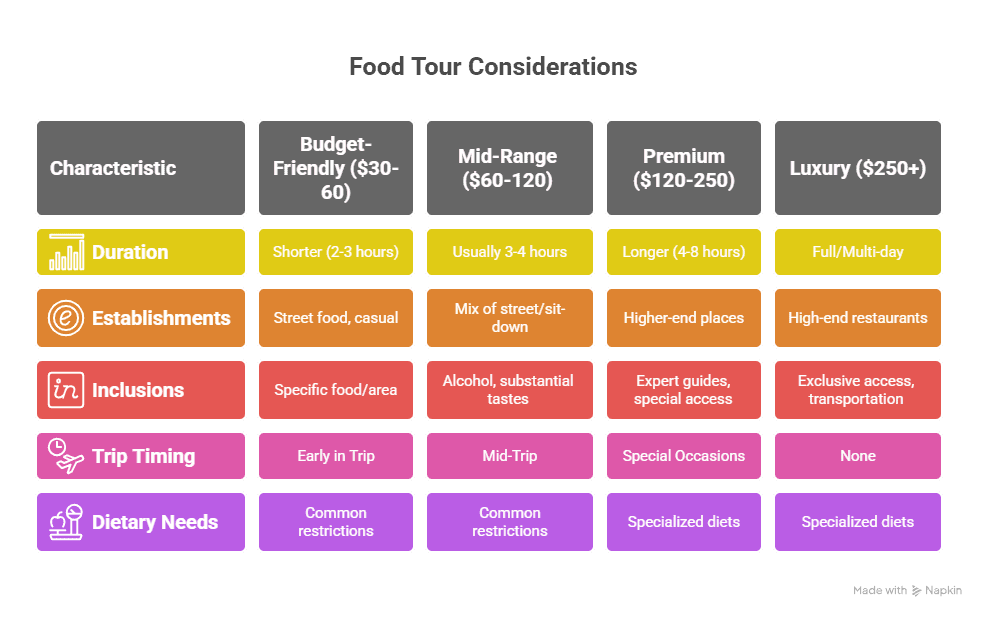
Culinary Interest Level
Food tourists exist on a spectrum from casual enthusiasts to dedicated gastronomes. Be honest about where you fall on this continuum:
Casual Food Enthusiast: You enjoy good food and are curious about local specialties, but food isn’t necessarily the primary focus of your travels.
You’re looking for accessible experiences that provide a general introduction to local cuisine without overwhelming detail or challenging flavors.
Curious Culinary Explorer: You’re genuinely interested in food cultures and willing to try unfamiliar dishes. You appreciate learning about ingredients and techniques but don’t necessarily need in-depth expertise.
You enjoy food as part of a broader cultural experience.
Dedicated Gastronome: Food is a primary motivation for your travels. You seek out specific restaurants, markets, or producers; research regional specialties before your trip; and are willing to organize your itinerary around memorable meals.
You value expertise and depth in your food experiences.
For casual enthusiasts, general food tours that combine popular dishes with some cultural context are often ideal. Curious explorers might prefer more specialized experiences focused on particular aspects of local cuisine.
Dedicated gastronomes may want expert-led tours that provide deep insights into specific culinary traditions or techniques.
Taste Preferences and Adventurousness
Consider your palate’s flexibility and your willingness to try unfamiliar or challenging foods:
Traditional Palate: You prefer familiar flavors and ingredients. While you’re open to trying local versions of dishes you recognize, you’re not necessarily looking to expand your culinary boundaries dramatically.
Moderately Adventurous: You’re willing to try new things within reason. You might sample unfamiliar dishes but prefer to have some familiar options available as well.
Highly Adventurous: You actively seek novel culinary experiences and are willing to try anything once. You’re comfortable with unfamiliar textures, intense flavors, and dishes that might challenge Western sensibilities.
Be realistic about your preferences when selecting tours. If you have a traditional palate, look for experiences that focus on accessible dishes rather than exotic specialties.
If you’re highly adventurous, seek out tours that explicitly promise authentic, challenging experiences rather than those designed for mass-market appeal.
Physical Considerations
Food tours vary significantly in their physical demands:
Walking Distance: Some tours involve several miles of walking between venues, while others concentrate on a small area or provide transportation between stops.
Pace: Tours may be leisurely with plenty of seated tastings or more active with quick stops and standing while eating.
Duration: Experiences range from quick 2-hour tastings to full-day immersions or even multi-day culinary journeys.
Weather Exposure: Consider whether the tour involves extended periods outdoors in potentially hot, cold, or wet conditions.
Be honest about your physical capabilities and preferences. If you have mobility issues or tire easily, look for tours that explicitly mention limited walking distances, transportation between venues, or plenty of seating opportunities.
If you prefer active experiences, seek out tours that combine culinary exploration with significant walking or other activities.
Social Preferences
Food tours also vary in their social dynamics:
Group Size: Tours range from intimate experiences with 4-6 participants to larger groups of 15-20 people.
Interaction Level: Some tours encourage conversation among participants, while others focus more on guide-to-group communication.
Privacy: Private tours offer personalized experiences but lack the social dimension of meeting fellow travelers.
If you’re traveling solo and hoping to meet others, group tours with smaller numbers (8-12) often provide the best balance of social interaction and personal attention.
If you’re traveling with family or friends and prefer privacy, consider booking a private tour that can be customized to your group’s interests.
Practical Considerations for Selecting Food Tours
Once you understand your personal preferences, several practical factors can help you narrow down your options:
Budget Considerations
Food tour prices vary dramatically based on location, duration, inclusions, and exclusivity. Consider these price categories:
Budget-Friendly ($30-60): Typically shorter experiences (2-3 hours) with street food or casual eateries. May focus on a specific neighborhood or food type.
Mid-Range ($60-120): Usually 3-4 hour experiences with a mix of establishments from street food to sit-down restaurants. Often include alcoholic beverages and more substantial tastings.
Premium ($120-250): Longer experiences (4-8 hours) with higher-end establishments, expert guides, and special access to kitchens or producers not open to the general public.
Luxury ($250+): Full-day or multi-day experiences with exclusive access, renowned chefs, high-end restaurants, and often transportation between venues.
When evaluating prices, consider what’s included—some seemingly expensive tours may actually represent good value if they include substantial tastings that replace meals, alcoholic beverages, or special experiences like cooking classes or market shopping.
Timing in Your Itinerary
Consider when to schedule food tours within your broader travel plans:
Early in Your Trip: Scheduling a food tour shortly after arrival provides an orientation to local cuisine and food customs, helping you make informed choices for the remainder of your stay.
Mid-Trip: By this point, you’ve gained some familiarity with the destination but still have time to revisit favorite spots discovered during the tour.
Special Occasions: Some high-end food tours make excellent celebration experiences for birthdays, anniversaries, or other special events during your travels.
Many experienced travelers recommend booking a food tour early in your visit, as the knowledge gained can enhance your dining experiences throughout the remainder of your trip.
Guides often provide recommendations for additional restaurants and food experiences that you can explore independently later.
Dietary Restrictions and Preferences
If you have dietary restrictions or preferences, research how different tour operators accommodate these needs:
Common Restrictions: Most established food tour companies can accommodate vegetarian diets and common allergies if notified in advance.
Specialized Dietary Needs: For more specific requirements (vegan, gluten-free, kosher, halal), look for companies that explicitly mention accommodating these diets or offer specialized tours.
Communication: Check whether the booking process includes questions about dietary needs and how far in advance you need to notify the company.
Don’t assume that dietary restrictions will prevent you from enjoying food tours. Many companies have developed thoughtful alternatives that maintain the cultural experience while accommodating different needs.
However, be realistic about certain destinations—it may be more challenging to accommodate strict dietary requirements in some culinary traditions than others.
Researching and Evaluating Food Tour Options
With your preferences and practical considerations in mind, use these strategies to research and evaluate specific tour options:
Reading Between the Lines in Tour Descriptions
Tour descriptions can reveal much about the experience if you know what to look for:
Specificity: Look for descriptions that name specific establishments, dishes, or producers rather than generic references to “local favorites” or “traditional foods.”
Educational Content: Phrases like “learn about,” “understand how,” or “discover the history” suggest tours with substantial cultural and historical context rather than just eating experiences.
Group Size: Check whether the description mentions a maximum number of participants, which often indicates a more personalized experience.
Guide Expertise: References to guides’ backgrounds (chefs, food writers, culinary historians) suggest tours with deeper expertise.
Authenticity Signals: Terms like “family-run,” “generations-old,” or “where locals eat” may indicate more authentic experiences, though these claims should be verified through reviews.
Evaluating Reviews Effectively
Online reviews can provide valuable insights, but they require careful interpretation:
Look Beyond Ratings: A tour with a slightly lower overall rating but detailed, thoughtful positive reviews may be preferable to one with a perfect score but generic praise.
Identify Reviewer Compatibility: Look for reviews from travelers who seem to share your preferences and priorities. Their experiences are more likely to predict your own satisfaction.
Note Specific Criticisms: Pay attention to repeated criticisms about specific aspects (group size, pace, food quality) rather than one-off complaints that may reflect individual preferences.
Check Recency: Food tours can change significantly over time as establishments close or change ownership. Recent reviews are more reliable indicators of current quality.
Consider Response Quality: How tour operators respond to negative reviews can reveal much about their professionalism and commitment to customer satisfaction.
Questions to Ask Before Booking
Don’t hesitate to contact tour operators directly with questions that will help you make an informed decision:
- “What makes your tour different from others in the area?” The response can reveal whether the company has a clear vision and unique approach.
- “Can you tell me more about your guides’ backgrounds?” Companies with knowledgeable, well-trained guides will be happy to share this information.
- “How do you select the establishments included in your tour?” The answer may reveal whether the company prioritizes authenticity, quality, or convenience in their choices.
- “How often do you update your tour routes and included establishments?” Regular updates suggest the company is responsive to changes in the local food scene and committed to quality.
- “How do you accommodate [specific dietary restriction]?” If you have particular dietary needs, ask for specific examples of alternative tastings rather than just confirmation that they can be accommodated.
Making the Most of Your Food Tour Experience
Once you’ve selected and booked a food tour, these strategies will help you maximize the experience:
Pre-Tour Preparation
A little preparation can enhance your food tour experience significantly:
Arrive Hungry (But Not Starving): Most food tours involve substantial tastings that add up to a full meal or more. Eat lightly beforehand so you can fully enjoy the offerings without feeling uncomfortably full.
Dress Appropriately: Wear comfortable walking shoes and weather-appropriate clothing. Consider that you’ll be eating in various settings, from street stalls to nicer establishments.
Bring Essentials: Carry water, hand sanitizer or wipes, a small notebook or phone for notes, and local currency for additional purchases or tips.
Research Basics: Familiarize yourself with a few key terms or dishes in the local cuisine so you have some context for what you’ll be experiencing.
During the Tour
These approaches will help you get the most from your food tour experience:
Ask Questions: Don’t hesitate to ask your guide about ingredients, techniques, cultural context, or recommendations for further exploration.
Take Notes: Record names of dishes you enjoy, establishments you might want to revisit, or recommendations from your guide for future reference.
Pace Yourself: Food tours often include more tastings than you might expect. Sample everything, but don’t feel obligated to finish every portion if you’re getting full.
Engage with Vendors and Producers: When appropriate, ask questions of the people preparing or serving your food. These interactions often become memorable highlights.
Connect with Fellow Participants: Food tours create natural opportunities for conversation with like-minded travelers who share your interest in culinary exploration.
Post-Tour Extension
The value of a food tour extends beyond the experience itself:
Apply Your Knowledge: Use what you’ve learned about local cuisine to make informed choices for the remainder of your trip.
Return to Favorites: Consider revisiting establishments you particularly enjoyed during the tour for a more extended experience.
Follow Recommendations: Act on suggestions from your guide for additional food experiences not included in the tour.
Share Feedback: Provide thoughtful feedback to the tour operator, which helps them improve their offerings and supports businesses delivering quality experiences.
Bring Techniques Home: If you learned specific techniques or recipes, try incorporating them into your cooking after returning home to extend the impact of your travel experience.
Last Thoughts
By considering your personal preferences, researching options thoroughly, and preparing appropriately for your chosen experience, you can ensure that food tours become highlights of your travels—providing not just delicious tastings but also deeper understanding of the cultures you visit through their most universal language: food.
In the final section, we’ll explore practical tips for maximizing your culinary travel experiences beyond organized tours, including strategies for independent food exploration, etiquette considerations for different cultures, and ways to extend the impact of your food discoveries after returning home.
FAQ
What is a culinary tour and what can I expect from it?
A culinary tour is an immersive experience that allows you to explore the local cuisine and culture of a destination. On such tours, you can expect to taste delicious food and drink while learning about the history and culture behind each dish.
How do I choose the perfect tour for my foodie adventure?
To choose the perfect tour, consider your interests, such as street food, wine tours, or cooking classes. Research the best local tours and read reviews to find one that offers engaging tour guides and covers popular destinations that align with your culinary preferences.
What are some popular destinations for a foodie tour?
Some popular destinations for foodie tours include Paris, Bangkok, Tokyo, and Mexico City. Each city offers unique culinary adventures, such as a Paris walking food tour or a Thai street food tour, showcasing the local culture and cuisine.
Can I create my own culinary experience on a tour?
Yes, many tours offer the option to create your own culinary experience. You can customize your itinerary to include specific types of cuisine, cooking classes, or market tours, ensuring a personalized adventure that caters to your tastes.
What should I look for in a small group food tour?
When choosing a small group food tour, look for tours that provide knowledgeable tour guides, allow for intimate experiences with local food, and include a variety of tastings. Small group settings often enhance the experience by fostering interaction and engagement.
Are wine tasting tours included in culinary tours?
Many culinary tours include wine tasting as part of the experience, especially in regions known for their wine production. These tours often combine wine tasting with local food pairings, providing a comprehensive understanding of the area’s culinary delights.
What can I expect on a chocolate tour?
On a chocolate tour, you can expect to visit artisan chocolate makers, learn about the chocolate-making process, and sample various chocolate products. These tours often include insights into the history and culture of chocolate in the region.
How do food tours enhance the experience of visiting a new city?
Food tours enhance the experience of visiting a new city by offering a unique perspective on the local culture and cuisine. They allow you to taste authentic dishes, meet passionate foodies, and discover hidden gems that you might not find on your own.
What types of food can I experience on a street food tour?
On a street food tour, you can expect to sample a variety of local street foods, from savory snacks to sweet treats. These tours often highlight the best spots for street food, allowing you to immerse yourself in the local culinary culture.


